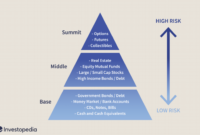How to calculate ROI in investments is a crucial aspect of financial decision-making, allowing investors to assess the profitability of their ventures. This guide will delve into the intricacies of ROI calculation, providing clarity and insights for effective investment strategies.
Understanding ROI Calculation

Investors often use Return on Investment (ROI) as a key metric to evaluate the performance of their investments. ROI is a ratio that measures the gain or loss generated on an investment relative to the amount of money invested.
ROI = (Net Profit / Cost of Investment) x 100%
Importance of ROI in Evaluating Investment Performance
- ROI provides a clear and simple way to assess the profitability of an investment.
- It helps investors compare the returns from different investment opportunities.
- ROI is crucial in decision-making processes, helping investors determine whether an investment is worth pursuing.
Examples of ROI in Financial Analysis
- Suppose an investor purchases a stock for $1,000 and sells it for $1,200. The ROI would be calculated as follows:
ROI = (1200 – 1000) / 1000 x 100% = 20%
- In real estate, if a property is bought for $200,000 and sold for $250,000, the ROI would be:
ROI = (250,000 – 200,000) / 200,000 x 100% = 25%
ROI Formula

In investments, ROI (Return on Investment) is a crucial metric used to evaluate the profitability of an investment over a specific period. The ROI formula helps investors determine the efficiency and success of their investments by comparing the return generated to the initial cost.
Components of ROI Formula
- The ROI formula is calculated as follows:
ROI = (Net Profit / Cost of Investment) * 100%
- Net Profit: This represents the total return generated from the investment, which includes income earned and any capital gains.
- Cost of Investment: This is the total amount of money invested in the project, including initial investment and any additional costs incurred.
Significance of Each Element
- Net Profit: The net profit component of the ROI formula is essential as it reflects the actual returns generated from the investment. A higher net profit indicates a more successful investment.
- Cost of Investment: Understanding the total cost of the investment is crucial for calculating ROI accurately. It helps investors assess the profitability of the project in relation to the resources invested.
Factors Affecting ROI: How To Calculate ROI In Investments

When calculating ROI in investments, it’s crucial to consider various factors that can significantly influence the outcome. Understanding these key factors is essential for making informed decisions and maximizing returns on your investments.
Risk
Risk plays a vital role in determining the ROI of an investment. Generally, higher-risk investments tend to offer the potential for higher returns, but they also come with increased uncertainty and the possibility of losing money. On the other hand, lower-risk investments typically provide more stable returns but at a lower rate. It’s important to assess your risk tolerance and investment goals when evaluating different opportunities to achieve the desired ROI.
Time Horizon, How to calculate ROI in investments
The time horizon of an investment is another critical factor that affects ROI calculations. Investments held for a longer period typically have the potential to generate higher returns due to the power of compounding. However, longer time horizons may also come with increased volatility and market fluctuations, which can impact the overall ROI. Understanding your investment timeline and financial objectives is essential when analyzing the potential ROI of different investment options.
Investment Type
The type of investment you choose can also significantly impact the ROI. Different asset classes, such as stocks, bonds, real estate, and commodities, offer varying levels of risk and return potential. Each investment type comes with its own set of opportunities and challenges that can influence the overall ROI. It’s essential to diversify your investment portfolio across different asset classes to manage risk and optimize returns based on your investment objectives.
Overall, when comparing the ROI of different investment strategies, considering factors such as risk, time horizon, and investment type is crucial for making well-informed decisions and achieving your financial goals.
Real-life Examples
When it comes to understanding ROI in investments, real-life examples can provide valuable insights into how to calculate and interpret this crucial metric. Let’s explore some scenarios to see ROI calculations in action and understand how they can impact investment decisions.
ROI Calculation for Stock Investments
Investing in stocks is a popular way to grow wealth, but calculating ROI on stock investments can be complex due to market fluctuations. Let’s consider an example:
Suppose you invested $10,000 in a stock and after one year, the value of your investment increased to $12,000. To calculate ROI, you would use the formula:
ROI = (Final Value of Investment – Initial Investment) / Initial Investment
In this case, the ROI would be:
ROI = ($12,000 – $10,000) / $10,000 = 0.20 or 20%
Interpreting this result means that your stock investment yielded a 20% return over one year, indicating a profitable venture.
ROI Calculation for Real Estate Investments
Real estate investments can also offer substantial ROI if done strategically. Consider this example:
You purchase a rental property for $200,000 and after five years, you sell it for $300,000. To calculate ROI, use the formula:
ROI = (Gain from Investment – Cost of Investment) / Cost of Investment
In this scenario, the ROI would be:
ROI = ($300,000 – $200,000) / $200,000 = 0.50 or 50%
This indicates a 50% return on your real estate investment over five years, demonstrating the potential profitability of real estate ventures.
Interpreting ROI Results in Investment Decisions
When interpreting ROI results, it’s essential to consider the context of the investment and compare it to alternative opportunities. A higher ROI does not always mean a better investment, as risk and time horizon play crucial roles. It’s crucial to assess whether the ROI aligns with your investment goals and risk tolerance before making any decisions.
In conclusion, mastering the art of calculating ROI in investments is essential for maximizing returns and making informed financial choices. By understanding the formula, factors affecting ROI, and real-life examples, investors can navigate the complex world of investments with confidence and precision.
When looking for high-return investments for 2024, it’s essential to consider various options that align with your financial goals. From stocks and real estate to cryptocurrencies and precious metals, diversifying your portfolio can help maximize returns. To learn more about potential investment opportunities for the upcoming year, check out this insightful guide on high-return investments for 2024.
When looking for high-return investments for 2024, it’s essential to consider various options such as stocks, real estate, or even cryptocurrency. However, it’s crucial to conduct thorough research and consult with financial experts like High-return investments for 2024 to make informed decisions and maximize your potential returns.




